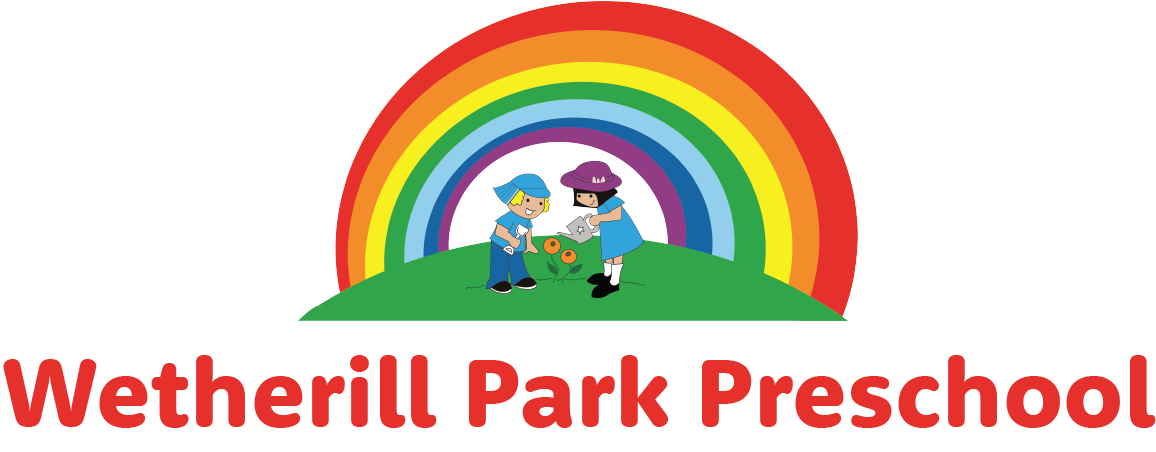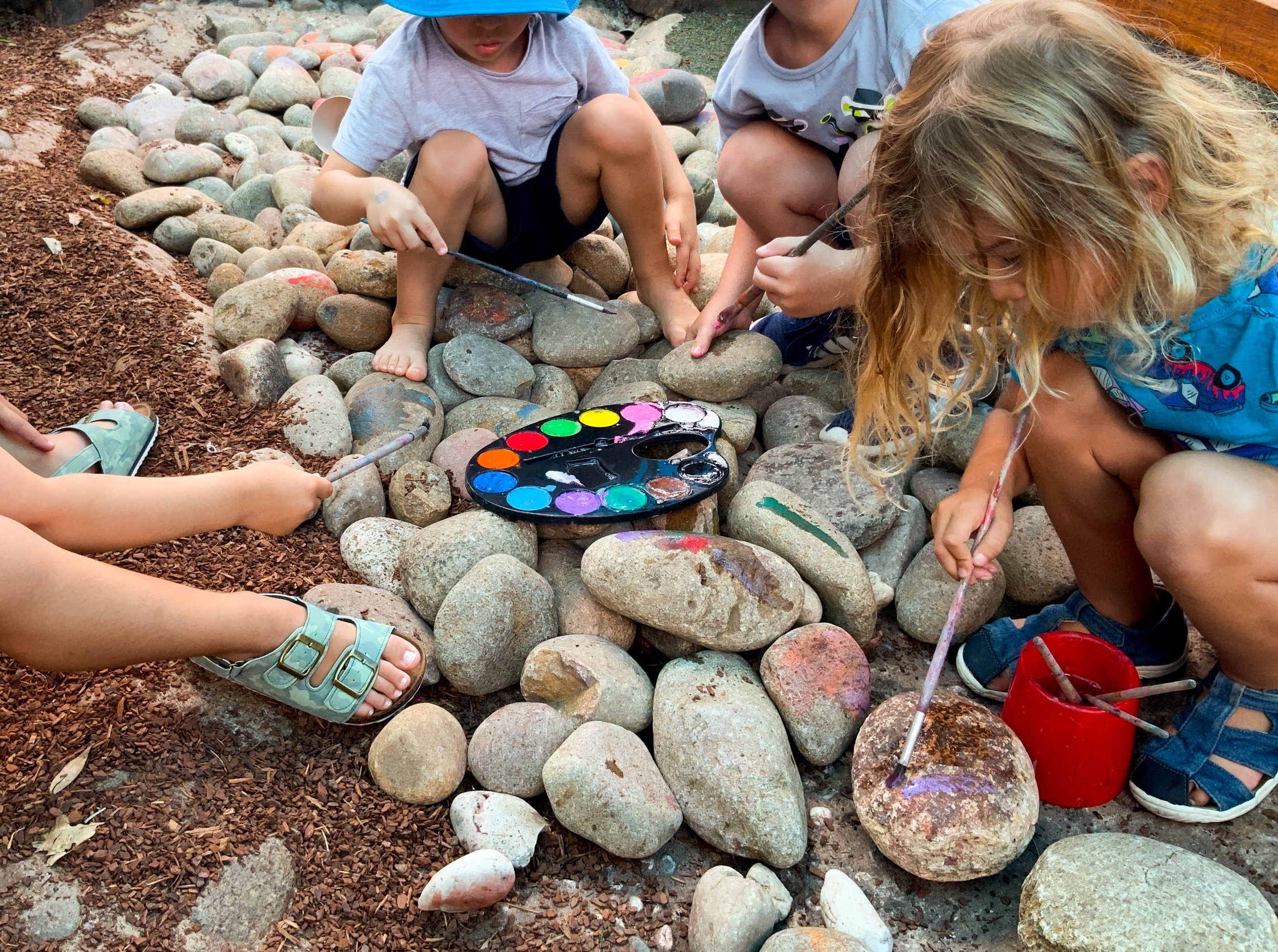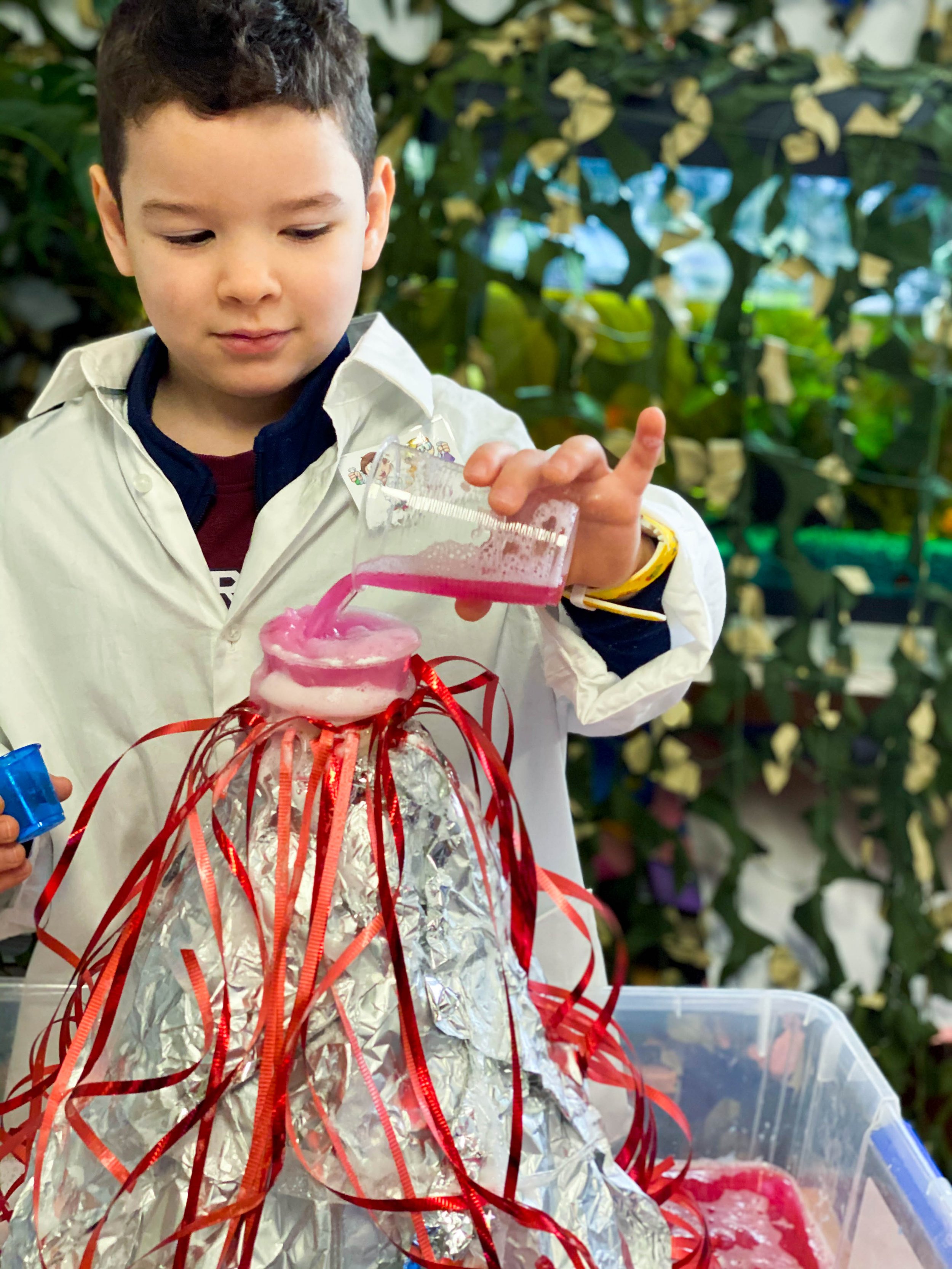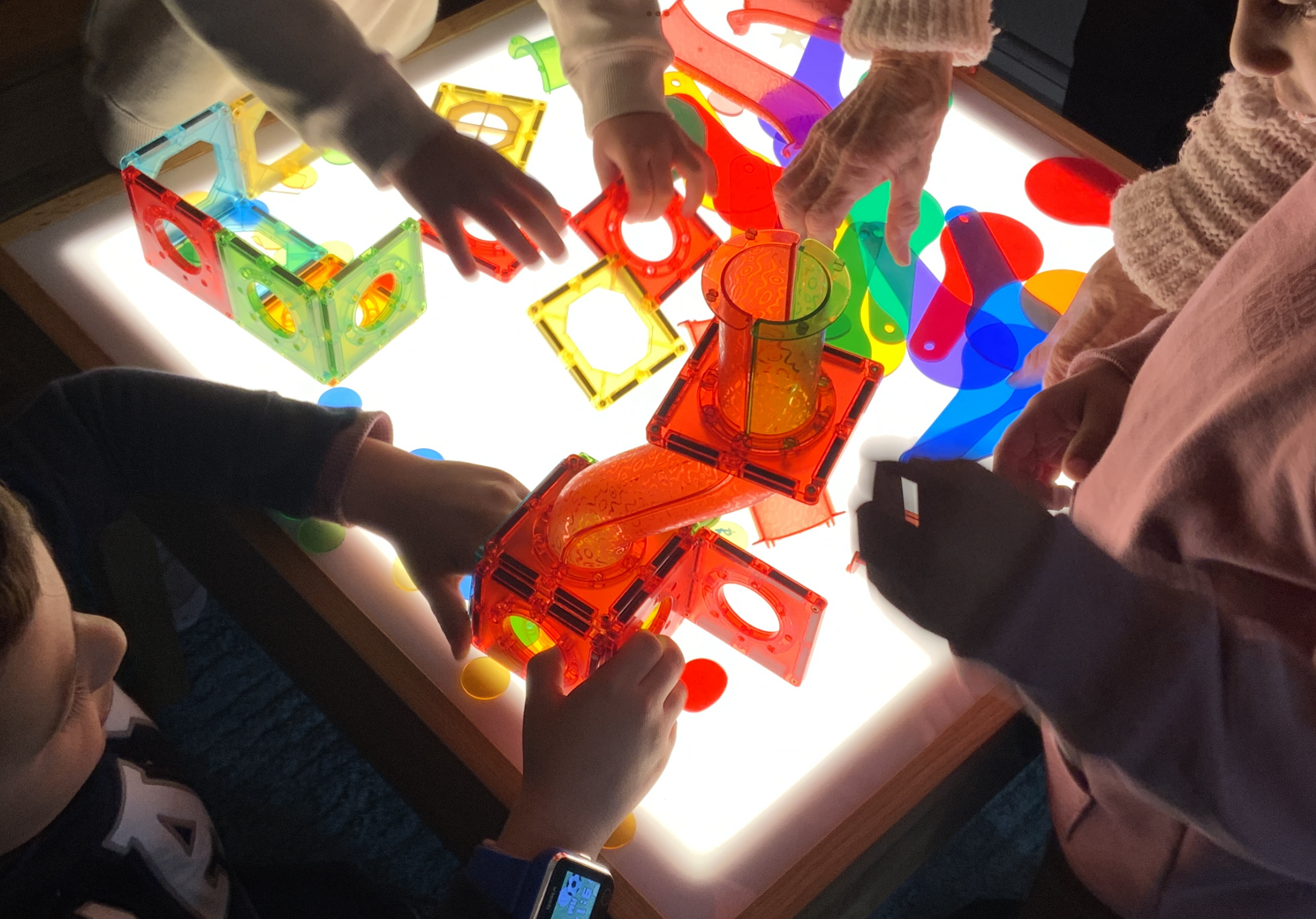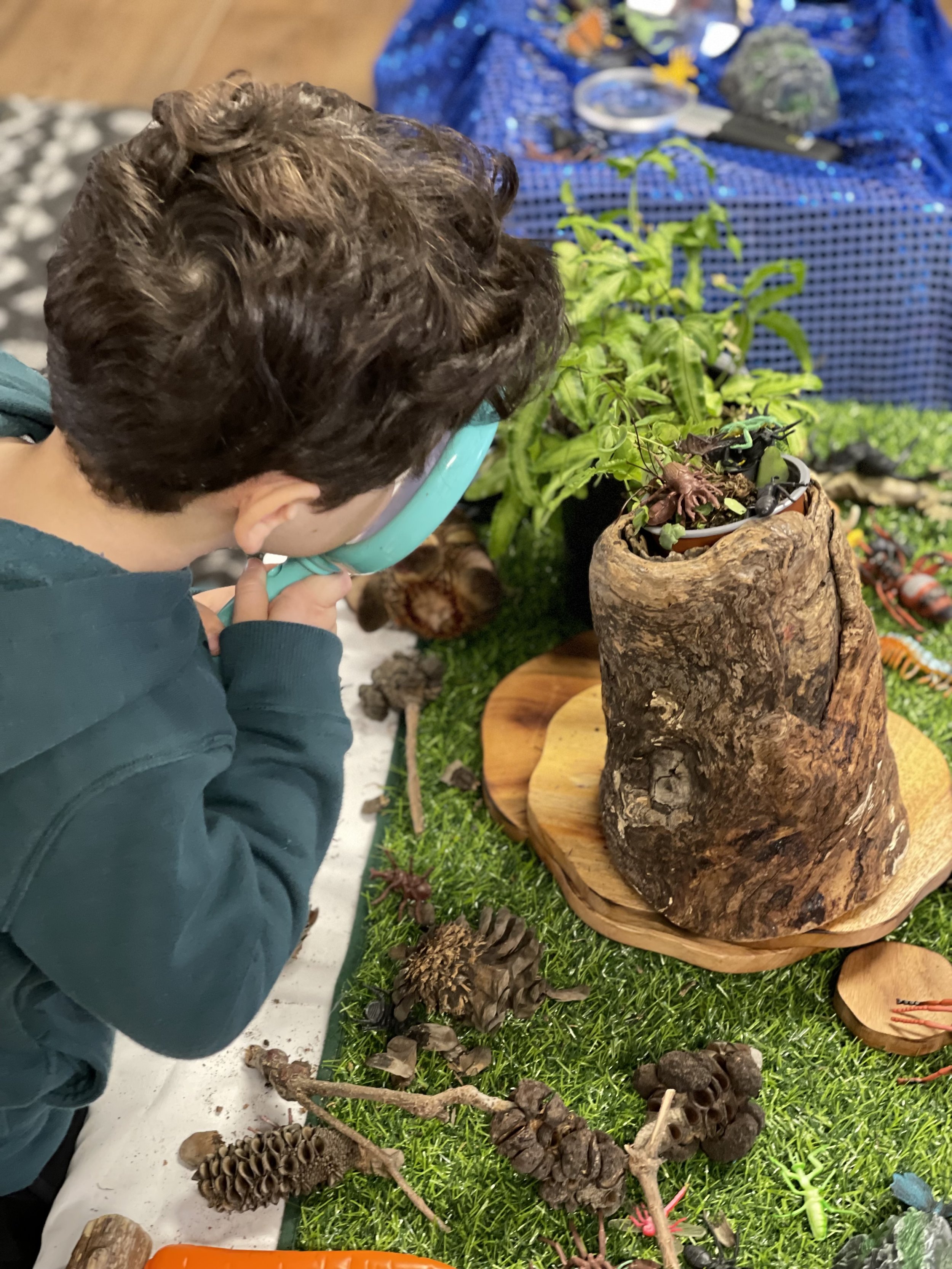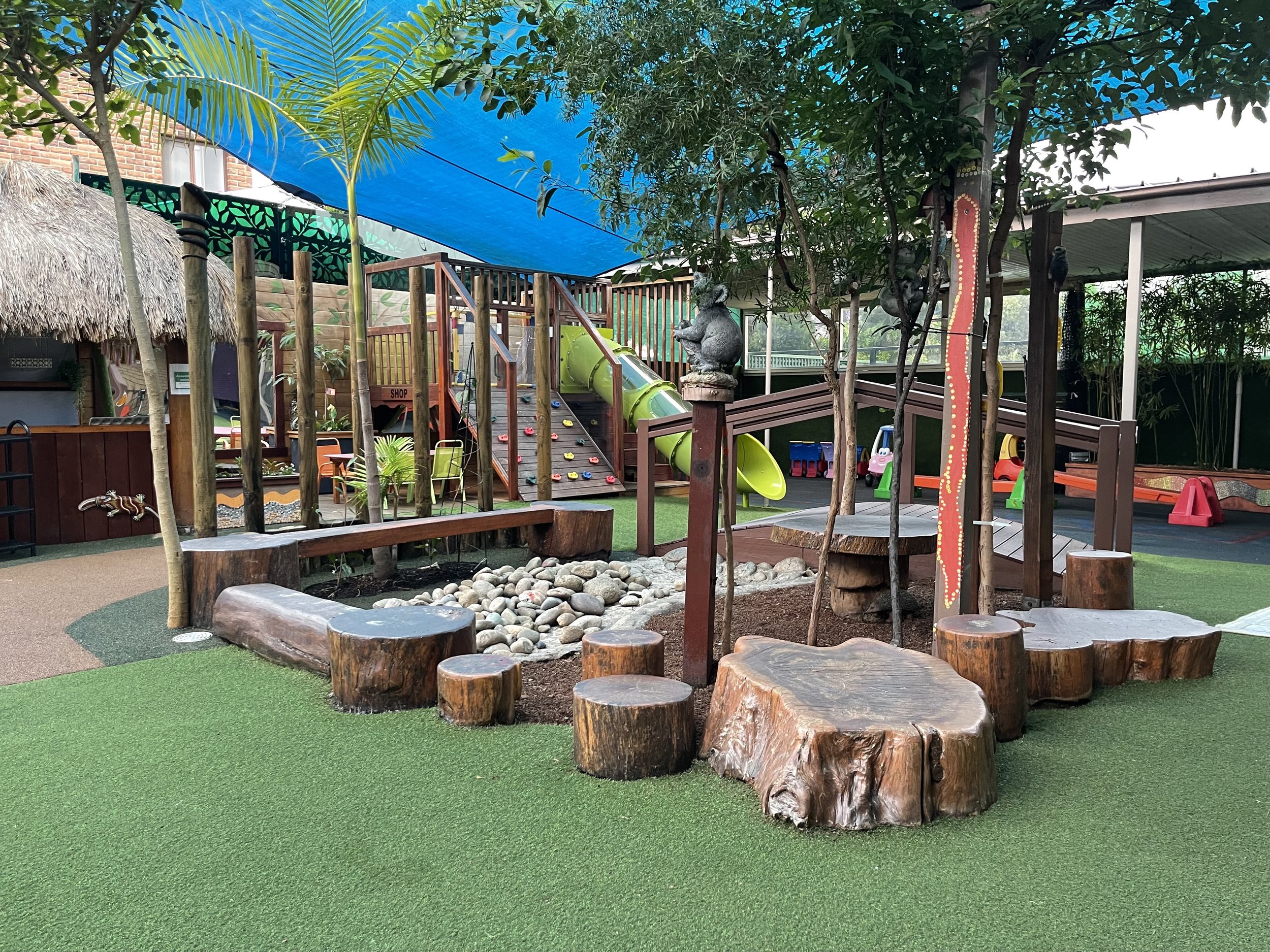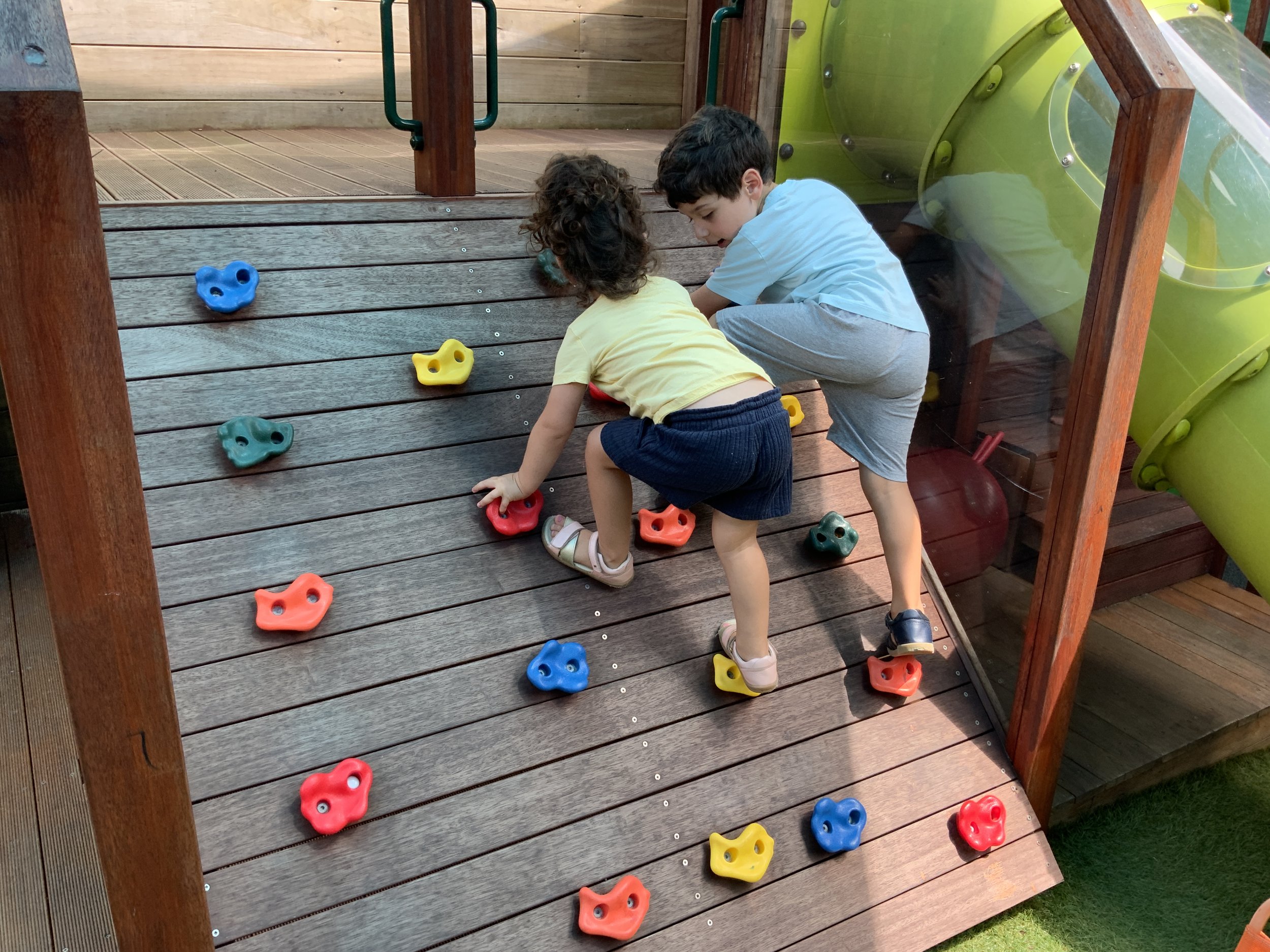LEARNING ENVIRONMENTS
Our indoor and outdoor environments offer children welcoming, vibrant, flexible and inclusive spaces to connect and contribute to their world.
Permanent learning centres include the sandpit, the dry riverbed, cubby, dramatic play areas, physical play equipment and the art studio. These flexible ever-evolving centres lend themselves to endless opportunities for collaborative learning.
Inspired by the Reggio Emilia approach, educators plan for intentional learning environments. This is known as “the environment as the third teacher.” By having easy access to materials and art resources, children are empowered with the freedom to create and extend their play.
A natural flow between indoor and outdoor programs promotes continuity of learning for children.
Educators promote sustainable practices including reusing, recycling and re-purposing, including making their own props for play and drama. Educators and children (as ‘Tomorrow’s Leaders’) take on shared roles and responsibilities to look after our natural environment including our edible garden and our worm farm.
